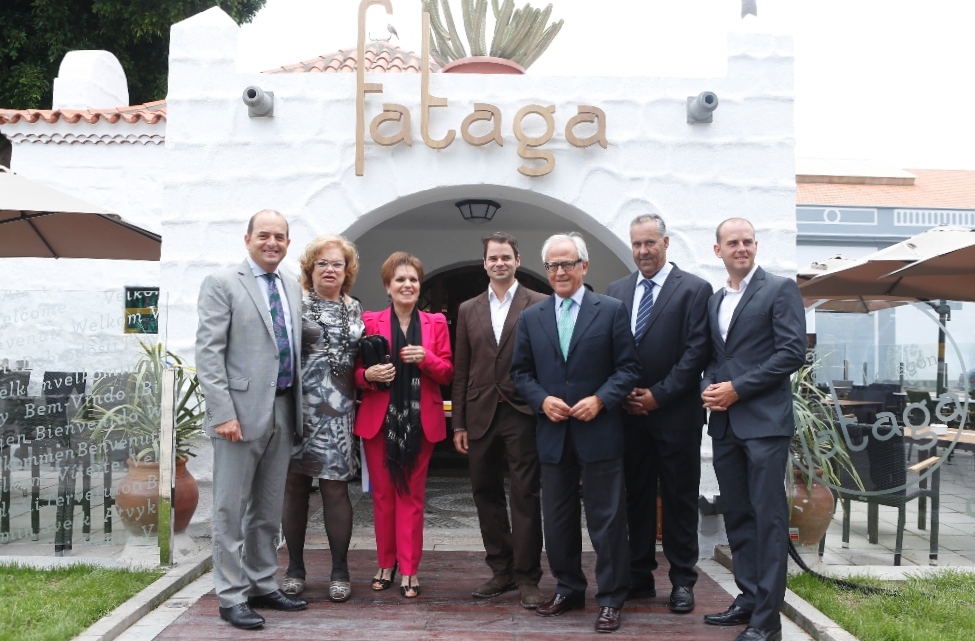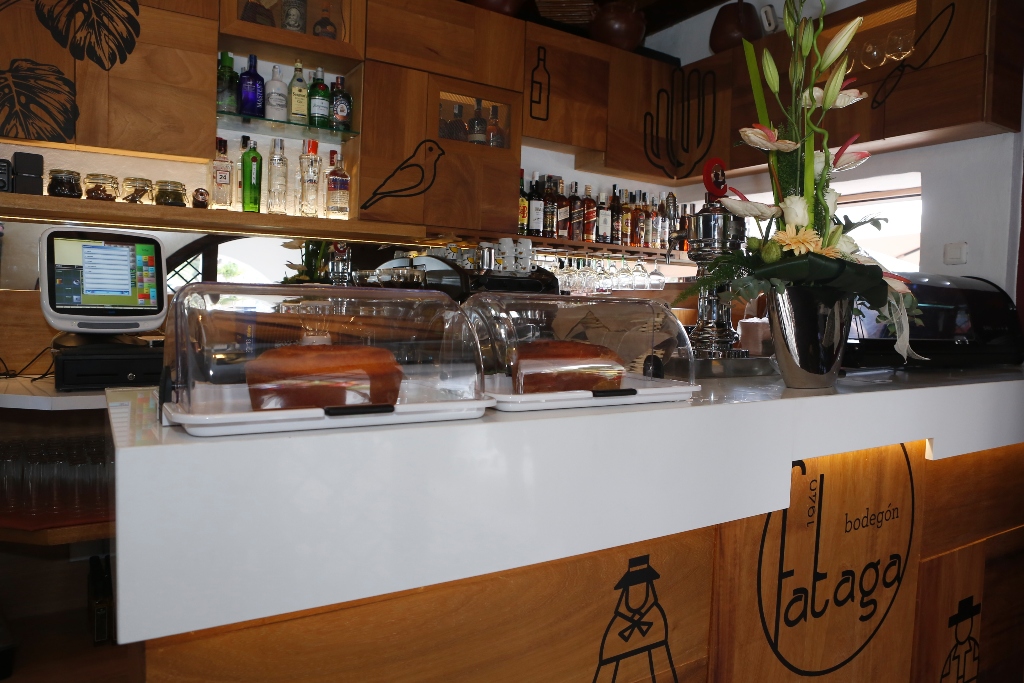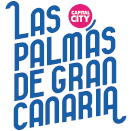El Bodegón de la Casa Fataga, en el Parque Santa Catalina, ha reabierto hoy viernes 21 de junio, sus puertas en un acto presidido por el Alcalde de Las Palmas de Gran Canaria, Juan José Cardona, después de una reforma de las instalaciones, que pretende convertir el inmueble en una referencia turística en la zona Puerto – Canteras, principal puerta de entrada de los turistas de crucero en la Ciudad.
 El Ayuntamiento de Las Palmas de Gran Canaria, a través del Servicio de Patrimonio, adjudicó el pasado 28 de febrero de 2013, la concesión administrativa para la explotación del inmueble Casa Fataga, para ser destinado como Bodegón Típico Canario, a la empresa Glofert S.L.
El Ayuntamiento de Las Palmas de Gran Canaria, a través del Servicio de Patrimonio, adjudicó el pasado 28 de febrero de 2013, la concesión administrativa para la explotación del inmueble Casa Fataga, para ser destinado como Bodegón Típico Canario, a la empresa Glofert S.L.
La recuperación de este emblemático inmueble, se incluye en el Plan de Reactivación del Parque Santa Catalina y su entorno, que impulsa el Ayuntamiento capitalino para potenciar la zona trasera de la Playa de Las Canteras como entrada principal al turismo de cruceros.
El bodegón estará abierto de domingo a jueves desde las 08.00h a 24.00h horas y los viernes y sábados de 08.00h a 01.00h horas.
Arquitectura canaria y ahorro energético
 El nuevo proyecto de la Casa Fataga mantiene la arquitectura canaria en la estructura principal del inmueble, con elementos de decoración exterior en la misma línea, y con un jardín con especies canarias, como Cardones (Euphorbia canariensis), Capas de la Reina (Farfugium japonicum) y esqueletos “Costillas de Adán" (Monstera deliciosa).
El nuevo proyecto de la Casa Fataga mantiene la arquitectura canaria en la estructura principal del inmueble, con elementos de decoración exterior en la misma línea, y con un jardín con especies canarias, como Cardones (Euphorbia canariensis), Capas de la Reina (Farfugium japonicum) y esqueletos “Costillas de Adán" (Monstera deliciosa).
Además, la iluminación nocturna se plantea con tecnología LED, con la instalación por primera vez en Canarias, de un sistema de vidrio fotovoltaico como el instalado en el Mercado de San Antón en Madrid, para fomentar la integración de las energías renovables a través de células fotovoltaicas en régimen de autoconsumo, tanto en la cubierta como en la fachada sur del almacén.
 El mobiliario exterior sigue las pautas del diseño rústico canario, con materiales como el ratán y la madera para las mesas, sillas con brazos, taburetes y barricas. En la zona interior del inmueble, las paredes están revestidas de cuadros con fotografías históricas del Parque Santa Catalina, con el objetivo de crear un pequeño centro de interpretación como homenaje a este espacio emblemático de la ciudad.
El mobiliario exterior sigue las pautas del diseño rústico canario, con materiales como el ratán y la madera para las mesas, sillas con brazos, taburetes y barricas. En la zona interior del inmueble, las paredes están revestidas de cuadros con fotografías históricas del Parque Santa Catalina, con el objetivo de crear un pequeño centro de interpretación como homenaje a este espacio emblemático de la ciudad.
El inmueble de la Casa Fataga, que se construyó en la primera mitad del Siglo XX, junto con la Casa de Turismo del Parque Santa Catalina, funcionó como tienda de souvenir, y ambos edificios fueron proyectados por Miguel Martín-Fernández de la Torre.
 www.lpavisit.com
[facebook] LPA Visit
[twitter] @LpaVisit
www.lpavisit.com
[facebook] LPA Visit
[twitter] @LpaVisit
The Cellar of the Casa Fataga, at Parque Santa Catalina, has reopened its doors today Friday the 21st of June, in a ceremony presided by the Mayor of Las Palmas de Gran Canaria, Mr. Juan José Cardona, after the refurbishment undergone at its facilities, to make it a tourist reference of the Port-Canteras area, the main entrance to the city for visitors coming in cruisers.
 The City Council of Las Palmas de Gran Canaria, through the Service of Heritage, awarded last 28th of February the administrative grant to operate the Casa Fataga building to be a Typical Canary Cellar in favor of the company Glofert S.L.
The City Council of Las Palmas de Gran Canaria, through the Service of Heritage, awarded last 28th of February the administrative grant to operate the Casa Fataga building to be a Typical Canary Cellar in favor of the company Glofert S.L.
The restoration of this emblematic building is included in the Reactivation Plan of Parque Santa Catalina and its surrounding area, promoted by the Capital City Council to strengthen the background of Las Canteras Beach as the main gateway for the cruisers tourism.
The cellar will be open from Sundays to Thursdays from 8am to midnight, and from 8am to 1am on Fridays and Saturdays.
Canary architecture and energy saving
 The new project of Casa Fataga keeps the Canary architecture in the main structure of the building, with elements of exterior decoration following the same pattern, and with a garden showing Canary species like Cardones (Euphorbia canariensis), Capas de la Reina (Farfugium japonicum) and Cerimans “Adam’s Rib” (Monstera deliciosa).
The new project of Casa Fataga keeps the Canary architecture in the main structure of the building, with elements of exterior decoration following the same pattern, and with a garden showing Canary species like Cardones (Euphorbia canariensis), Capas de la Reina (Farfugium japonicum) and Cerimans “Adam’s Rib” (Monstera deliciosa).
Besides, the night lighting is planned with LED technology and installing, for the first time in the Canaries, of a photovoltaic glass system like the one installed at the San Antón Market in Madrid, to promote the use of renewable energies with photovoltaic self-consumption cells, both at the roof and on the southern façade of the storehouse.
 The outside furniture keeps the lines of the Canary rustic design, using materials like rattan and Wood for tables and armchairs, stools and barrels. On the inside of the building, the walls are covered with historic photographs and images of the Parque Santa Catalina, focusing on creating a small interpretation centre as tribute to this emblematic space of the city.
The outside furniture keeps the lines of the Canary rustic design, using materials like rattan and Wood for tables and armchairs, stools and barrels. On the inside of the building, the walls are covered with historic photographs and images of the Parque Santa Catalina, focusing on creating a small interpretation centre as tribute to this emblematic space of the city.
The Casa Fataga building, built in the first half of the Twentieth century with the House of Tourism at Parque Santa Catalina, worked as a souvenir and handicraft shop, and both buildings were projected by Miguel Martín-Fernández de la Torre.
www.lpavisit.com [facebook] LPA Visit [twitter] @LpaVisit

